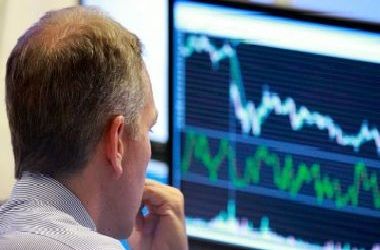Exchange-traded derivatives delivered double-digit growth in 2015, setting new records that market participants believe will be surpassed in 2016 as investors anticipate a series of volatility-driven trading and hedging opportunities stemming from Chinese growth concerns, energy price uncertainty, the UK’s Brexit vote and a US presidential election.
According to data from the World Federation of Exchanges, listed derivatives volumes jumped 12% in 2015 as 23.4bn contracts traded across 38 exchanges, breaking previous records that were set in 2011.
“Collapsing energy prices and the follow-on effects that reverberated through the global economy sent a surge of volatility across asset classes,” said Andy Nybo, global head of research and consulting at Tabb Group.
“That has been a key driver of activity by causing a re-evaluation of risk exposures and hedging strategies across the financial community, whether it is risk managers or speculators.”
Other factors driving that growth include a long-awaited migration from over-the-counter markets to more capital-efficient listed alternatives.
“There’s no big bang, but we see a general drift to listed derivatives,” said Kieron Smith, global head of derivatives execution and clearing at BNP Paribas. “On a down day we see OTC volume down more than listed and on an up day, we see the bigger pick-up in listed instruments.”
Sweeping derivatives reforms implemented in the wake of the global financial crisis have hiked the cost of OTC swaps by pushing contracts into central counterparty clearinghouses and forcing vanilla contracts to be traded over exchange-like platforms. Later this year, swaps users will be required to post collateral against their uncleared positions.
“With mandatory clearing dates set in Europe and uncleared margin rules coming into play in September, the ability for OTC products to achieve the same benefits over listed alternatives is certainly lower,” said Smith.
Increased correlation that has accompanied the jump in volatility may also have played a part in any migration as investors have been able to replicate many OTC transactions with a relatively small number of futures contracts.
Market participants estimate that rising costs associated with OTC instruments could add around 5% to annual growth in listed derivatives markets as the combined impact of an array of capital, trading and clearing rules become clear.
“In Asia, there is a lot optimism that the listed market will take off”
“Clients are taking a hard look at these cost changes and adapting accordingly, but it’s a process that is occurring over time and there isn’t an individual piece of regulation that is driving it,” said Nybo.
Asian commodity surge
Asia-Pacific activity was the biggest driver of the record volumes with a 36% jump in the number of contracts traded in the region, according to WFE. By asset class, it was currencies and commodities leading the charge as activity in those markets climbed by 36% and 26% respectively.
“In Asia, there is a lot optimism that the listed market will take off,” said BNPP’s Smith. “Given many of the restrictions, listed products make the derivatives market easier to trade. We’ve already seen Asian volume overtake North America, and we’d expect that growth to continue.”
Commodity futures traded more than 4bn contracts in 2015, representing 17% of all listed derivatives activity and overtaking stock index options (16%) and single stock options (15%) as the most actively traded contracts.
China’s commodity exchanges delivered some of the biggest growth stories of the year. Combined, the Dalian Commodity Exchange and Shanghai Futures Exchange accounted for half of all commodity-related futures and options trades across the globe. Both recorded more than 1bn traded contracts, representing growth of 45% and 25% respectively.
Activity in commodity contracts was buoyed in part by restrictions placed by Chinese regulators on equity and related derivatives market activities in an attempt to stem falling stock prices.
“Where China didn’t institute controls, we saw big jumps in volume with a shift in focus from equity and financial derivatives to commodity derivatives, where there were fewer regulatory restrictions,” said Tabb’s Nybo. “Adding in the significant volatility in commodity markets, it is little surprise that Chinese commodity markets led the growth.”
Asia was also behind a 6% jump in overall options activity, defying a stagnating US options market, which saw a decade of growth come to an abrupt halt in 2011.
The US options market is facing regulatory and structural issues, with the impact of Dodd-Frank, Volcker and Basel III capital rules ultimately closing the door on large proprietary trading activity that historically buoyed volume.
New regulations are also hampering that market. The Internal Revenue Code, for example, requires non-US investors to pay a 30% withholding tax on all equity derivatives contracts, while the “Camp Proposal” requires all derivatives to be marked to market, with retail investors forced to pay tax on mark-to-market gains.
Despite the structural issues, some signs of life have returned to the US options market with the first quarter delivering a 6% increase in activity compared with 2015, according to data from the Options Clearing Corporation. Market participants expect further growth around November’s US Presidential election, and more generally in response to oil price fluctuations and any disappointing data coming from China.
“We see continued good times in the derivatives market as there are lots of events and big questions still remain over what will happen to energy prices,” said Nybo.
“Over the last few years we saw a range of geo-political crises that didn’t really spill over into the financial markets, but there’s now heightened awareness that if there are growth concerns in China, that’s going to have a very widespread impact.”
